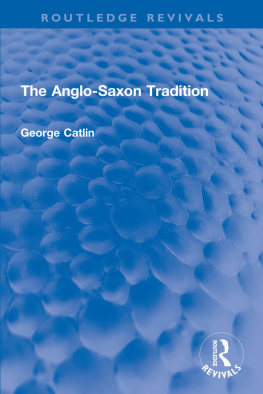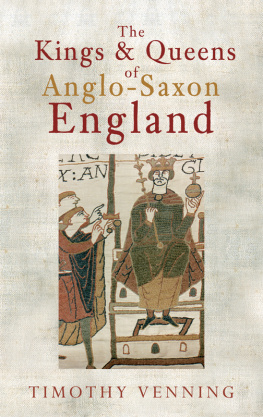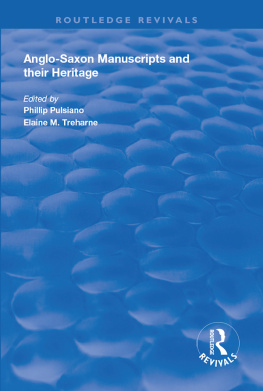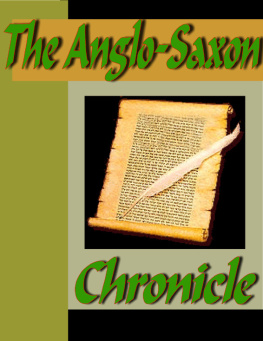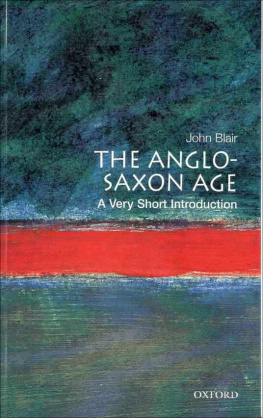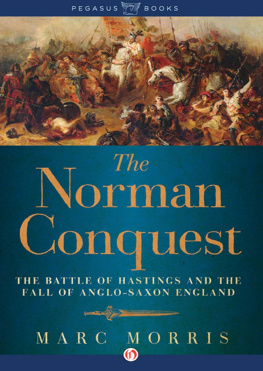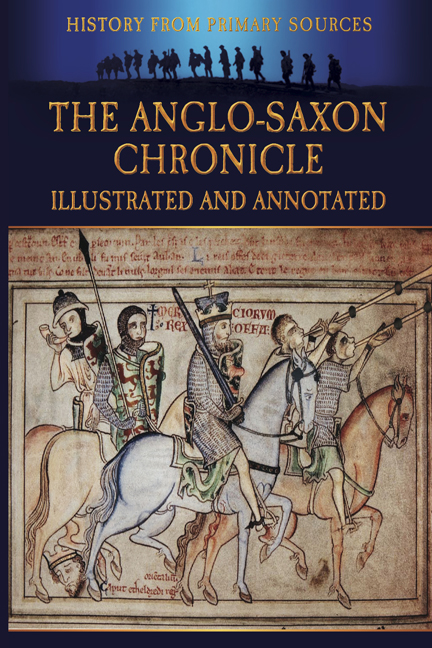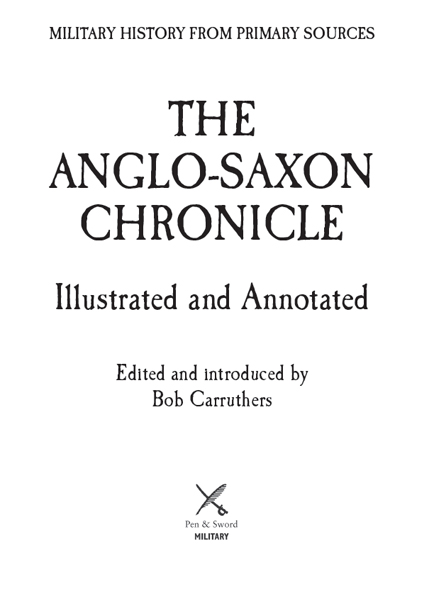
This edition published in 2013 by
Pen & Sword Military
An imprint of
Pen & Sword Books Ltd
47 Church Street
Barnsley
South Yorkshire
S70 2AS
First published in Great Britain in 2011 in digital format byCoda Books Ltd.
Copyright Coda Books Ltd, 2011
Published under licence by Pen & Sword Books Ltd.
ISBN 978 1 78159 148 2
eISBN 9781473838338
This edition originally published as The Anglo-Saxon Chronicleand published by Everyman Press, London 1912. With a translation by Rev. James Ingram (London, 1823) With additional readings from the translation of Dr. J.A. Giles (London, 1847)
The right of Bob Carruthers to be identified as Author of this work has been asserted by him in accordance with the Copyright, Designs and Patents Act 1988.
A CIP catalogue record for this book is available from the British Library
All rights reserved. No part of this book may be reproduced or transmitted in any form or by any means, electronic or mechanical including photocopying, recording or by any information storage and retrieval system, without permission from the Publisher in writing.
Printed and bound in India
By Replika Press Pvt. Ltd.
Pen & Sword Books Ltd incorporates the Imprints of Pen & Sword Aviation, Pen & Sword Family History, Pen & Sword Maritime, Pen & Sword Military, Pen & Sword Discovery, Pen & Sword Politics, Pen & Sword Atlas, Pen & Sword Archaeology, Wharncliffe Local History, Wharncliffe True Crime, Wharncliffe Transport, Pen & Sword Select, Pen & Sword Military Classics, Leo Cooper, The Praetorian Press, Claymore Press, Remember When, Seaforth Publishing and Frontline Publishing
For a complete list of Pen & Sword titles please contact
PEN & SWORD BOOKS LIMITED
47 Church Street, Barnsley, South Yorkshire, S70 2AS, England
E-mail: enquiries@pen-and-sword.co.uk
Website: www.pen-and-sword.co.uk
Contents
Introduction
By Bob Carruthers
T he Anglo-Saxon Chronicle is one of the most important sets of historical documents concerning the history of the British Isles. Without these vital documents we would have virtually no knowledge of some of the key events in the history of these islands during the dark ages.
Without the Chronicle and Bedes Historia Ecclesiastica Gentis Anglorum (the Ecclesiastical History of the English People), it would be impossible to write the history of the English from the Romans to the Norman Conquest. It is clear that records and annals of some kind began to be kept in England at the time of the earliest spread of Christianity, but no such records survive in their original form. Instead they were incorporated in later works, and it is thought likely that the Chronicle contains many of these. The history it tells is not only that witnessed by its compilers, but also that recorded by earlier annalists, whose work is in many cases preserved nowhere else.
Its importance is not limited to the historical information it provides, however. It is just as important a source for the early development of the English language. The Peterborough Chronicle changes from the standard Old English (Anglo-Saxon) literary language to early Middle English after 1131, providing some of the earliest Middle English text known.
The Chronicle is not without literary interest either. Inserted at various points since the 10th century are Old English poems in celebration of royal figures and their achievements: The Battle of Brunanburh (937), on King thelstans victory over the combined forces of Vikings, Scots and the Strathclyde Britons, and five shorter poems, Capture of the Five Boroughs (942), The Coronation of King Edgar (973), The Death of King Edgar (975), The Death of Prince Alfred (1036), and The Death of King Edward the Confessor (1065).
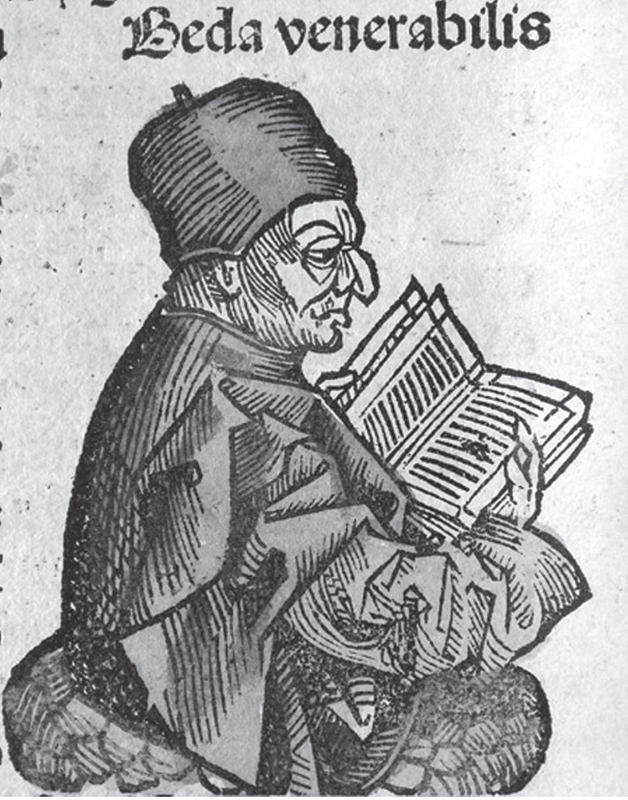
A Medieval depiction of the Venerable Bede from the Nuremberg Chronicle, 1493 .
The term chronicle is slightly misleading as there is no single master text. At present there are nine known versions or fragments of the original Anglo-Saxon Chronicle in existence. All of the extant versions vary (sometimes greatly) in content and quality and crucially all of the surviving manuscripts are copies, so it is not known for certain where or when the first version of the Chronicle was composed. However, it is now generally agreed that the original version was written in the late 9th century by a scribe in Wessex. After the original Chronicle was compiled, copies were made and distributed to various monasteries. Additional copies were made for further distribution or to replace lost manuscripts, and some copies were updated independently of each other. Some of these later copies are those that have survived.
The translation that has been used for this electronic version is not a translation of any one Chronicle; rather, it is a conflation of readings from many different versions containing primarily the translation of Rev. James Ingram from 1828. The footnotes are those of Rev. Ingram and are supplied for the sake of completeness. There are additions to this translation by Dr J.A. Giles in 1847 which were originally in the form of an appendix to the Everyman edition. These have been marked by square brackets [ ]. Modern readers should approach those notes with extreme care. In many cases the views expressed by Rev. Ingram are long out of date, having been superseded by almost 175 years of active scholarship. At best, these notes will provide a starting point for inquiry. They should not, however, be treated as authoritative.
The earliest extant manuscript is the Winchester Chronicle which was written by a single scribe up to the year 891. We know this to be the case because the scribe wrote the year number, DCCCXCII, in the margin of the next line and subsequent material was written by other scribes. This strongly suggests that the composition of the Chronicle took place no later than 892; further evidence is provided by Bishop Assers use of a version of the Chronicle in his work Life of King Alfred, which is known to have been composed in 893. It is also known that the Winchester manuscript is at least two removes from the original Chronicle; as a result, there is no proof that the Chronicle was compiled at Winchester.
It is also difficult to fix the date of composition for the original manuscript, but it is generally thought that the Chronicle was composed during the reign of Alfred the Great (87199), as Alfred deliberately tried to revive learning and culture during his reign, and encouraged the use of English as a written language. The Chronicle, as well as the distribution of copies to other centres of learning, may be a consequence of the changes Alfred introduced.
The Chronicle incorporates material from multiple sources. The entry for 755, describing how Cynewulf took the kingship of Wessex from Sigebehrt, is far longer than the surrounding entries, and includes direct speech quotations from the participants in those events. It seems likely that this was taken by the scribe from existing saga material. Early entries, up to the year 110, probably came from one of the small encyclopaedic volumes of world history in circulation at the time the Chronicle was first written. The chronological summary to Bedes Ecclesiastical History was used as a source. The Chronicle gives dates and genealogies for Northumbrian and Mercian kings, and provides a list of Wessex bishops; these are likely to have had separate sources. The entry for 661 records a battle fought by Cenwalh that is said to have been fought at Easter; this precision implies a contemporary record, which survived and was re-used by the Chronicle scribe.


